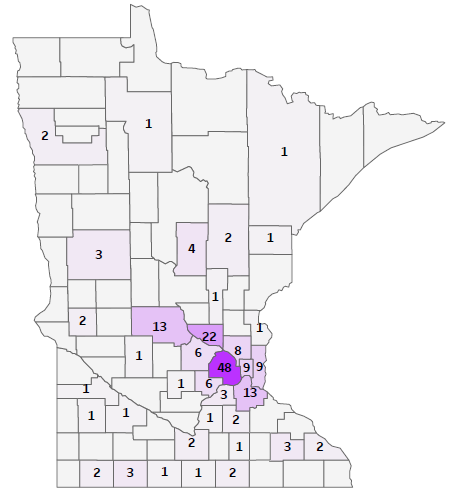
Infectious diseases pose a significant threat to public health, and Hennepin County is no exception. As one of the most populous counties in Minnesota, Hennepin County is at risk for outbreaks of infectious diseases, which can have serious consequences for residents, particularly vulnerable populations such as the elderly, young children, and those with compromised immune systems. In this article, we will explore the types of infectious diseases that affect Hennepin County, their causes, symptoms, and prevention methods, as well as the efforts of local health authorities to control and prevent their spread.
Types of Infectious Diseases in Hennepin County
Hennepin County is susceptible to a range of infectious diseases, including:
- Respiratory diseases: such as influenza, pneumonia, and tuberculosis, which can spread through the air when an infected person coughs or sneezes.
- Gastrointestinal diseases: such as norovirus, salmonella, and E. coli, which can spread through contaminated food and water.
- Vaccine-preventable diseases: such as measles, mumps, and whooping cough, which can spread through person-to-person contact.
- Vector-borne diseases: such as Lyme disease and West Nile virus, which can spread through the bite of an infected tick or mosquito.
Causes and Symptoms of Infectious Diseases
Infectious diseases are caused by pathogens such as bacteria, viruses, and parasites, which can enter the body through various means, including:
- Person-to-person contact: through touching, shaking hands, or sharing personal items.
- Contaminated food and water: through consuming undercooked or raw foods, or drinking contaminated water.
- Vector-borne transmission: through the bite of an infected tick or mosquito.
- Airborne transmission: through inhaling droplets that contain pathogens.
The symptoms of infectious diseases can vary widely, but common symptoms include:
- Fever
- Chills
- Cough
- Sore throat
- Diarrhea
- Vomiting
- Headache
- Body aches
Prevention and Control Methods
To prevent the spread of infectious diseases in Hennepin County, residents can take several steps, including:
- Getting vaccinated: against vaccine-preventable diseases such as influenza, measles, and whooping cough.
- Practicing good hygiene: such as washing hands frequently, covering the mouth and nose when coughing or sneezing, and avoiding close contact with people who are sick.
- Avoiding contaminated food and water: such as consuming cooked foods, avoiding raw or undercooked meats, and drinking bottled or filtered water.
- Using insect repellent: to prevent vector-borne diseases such as Lyme disease and West Nile virus.
The Hennepin County Public Health Department plays a critical role in controlling and preventing the spread of infectious diseases, through:
- Surveillance and monitoring: of disease outbreaks and trends.
- Investigation and response: to disease outbreaks, including contact tracing and vaccination efforts.
- Education and outreach: to inform residents about the risks of infectious diseases and the importance of prevention methods.
By understanding the types of infectious diseases that affect Hennepin County, their causes and symptoms, and taking steps to prevent their spread, residents can help protect public health and prevent the spread of infectious diseases. The Hennepin County Public Health Department is committed to working with residents, healthcare providers, and community organizations to prevent and control infectious diseases, and to ensure that all residents have access to the resources and information they need to stay healthy and safe.



![[PDF] Rising Trends of Chicken Pox Outbreaks among School Children in ...](https://d3i71xaburhd42.cloudfront.net/85a0968ff20e975c87721cc20361cc75779bd759/5-Figure5-1.png)




